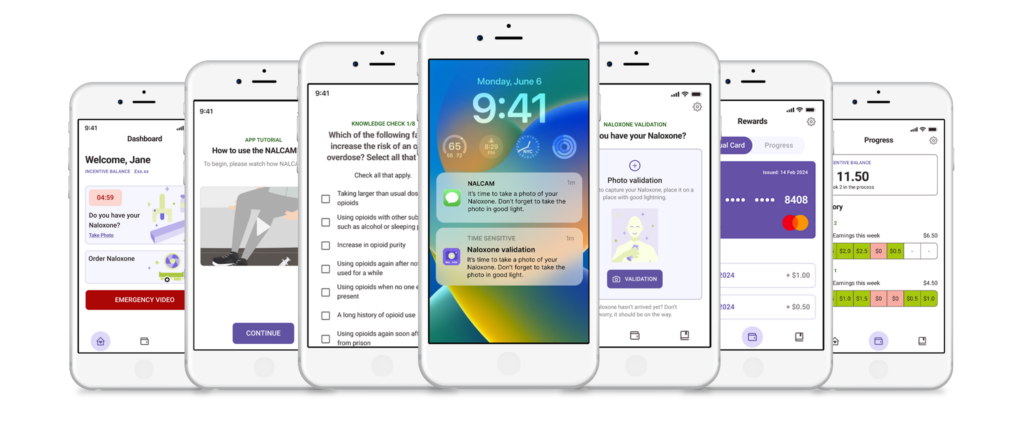100% of witnessed opioid overdoses could possibly be reversed with naloxone to save a life.
The World Health Organization is targeting to achieve a 90% naloxone carriage rate for those trained and given naloxone.3
Number of lives [overdose deaths] in 2021 that potentially could have been saved with naloxone.2*
40% of opioid overdoses are witnessed or discovered in time for naloxone to be effective.1
In 2020, researchers in Baltimore found only a 9% naloxone carriage rate in a group of people who inject drugs.4
What is NALCAM?
NALCAM is an app that helps save lives!
NALCAM trains individuals on how to use naloxone, then encourages them with daily incentives for a duration of time to carry this lifesaving medication with them. This helps individuals create a habit of carrying naloxone every day.

NALCAM enables you to drive localized, targeted campaigns to reduce overdose deaths in your community.
NALCAM increases competence in administering naloxone, then develops and reinforces the habit of carrying it with you so it’s there when you need it.
How NALCAM Works
(Campaign Sponsors)
- Set a budget / target number of clients
- Choose geofencing parameters for your community
- Select naloxone fulfillment options
- Socialize and launch program
- Monitor performance / report on progress
How NALCAM Works for clients
- Download NALCAM from App Store
- Watch Naloxone training and take quiz
- Incentive program begins
- NALCAM validates carriage
- Real-time rewards are delivered in-app
Through contingency management, incentivizing behavior,
carriage of Naloxone increases!
Contact Us
Citations / Footnotes:
1. Doe-Simkins M, Frankel S, Davis C, Bazron BJ. Naloxone Saturation: An Overview and Models for Success. Presented at: Rx and Illicit Drug Summit. April 10-13, 2023; Atlanta, GA.
2. Centers for Disease Control and Prevention, National Center for Health Statistics. National Vital Statistics System, Mortality 1999-2020 on CDC WONDER Online Database, released in 2021. Data are from the Multiple Cause of Death Files, 1999-2020, as compiled from data provided by the 57 vital statistics jurisdictions through the Vital Statistics Cooperative Program. Available at http://wonder.cdc.gov/mcd-icd10.html
3. “WHO-UNODC “Stop Overdose Safely (S-O-S)” Initiative”. Who.Int, 2014, https://www.who.int/initiatives/joint-unodc-who-programme-on-drug-dependence-treatment-and-care/S-O-S-initiative.
4. Buresh, Megan, et al. “Fatal Overdose Prevention and Experience with Naloxone: A Cross-sectional Study from a Community-based Cohort of People Who Inject Drugs in Baltimore, Maryland.” PLOS ONE, vol. 15, no. 3, 2020, p. e0230127, https://doi.org/10.1371/journal.pone.0230127.
* 40% of the 75,785 opioid (only) overdose deaths recorded in 2021.2